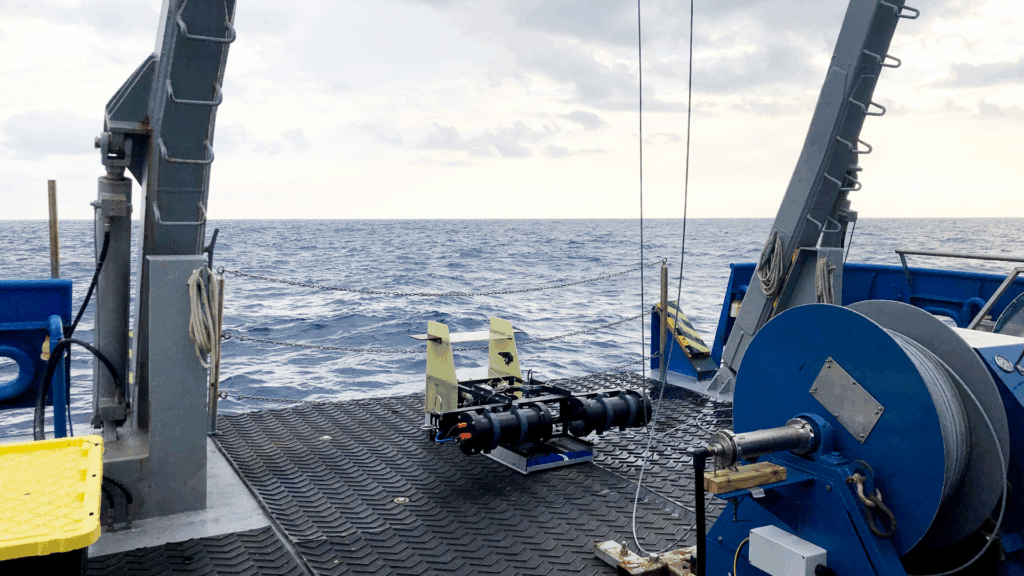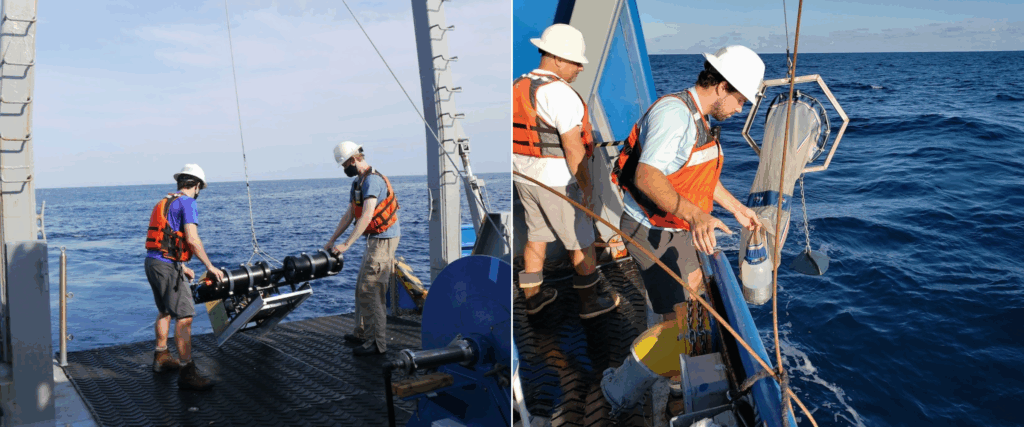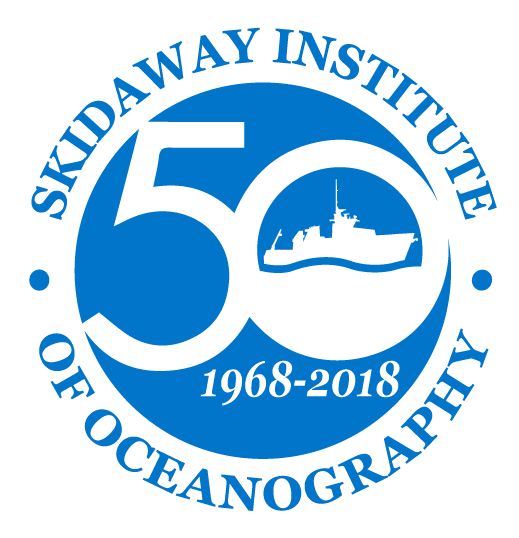
The ocean’s structure, how it is layered and mixed, has a significant influence on life beneath the surface. A new study led by University of Georgia Skidaway Institute of Oceanography (SkIO) scientists shows how these patterns in the South Atlantic Bight affect where different types of zooplankton swim and live.
The study, led by former SkIO master’s student Kyle Aaron, found that in areas where ocean waters were well mixed, zooplankton communities were less diverse. These areas were dominated by mostly small, slow-moving, gelatinous organisms. But in areas where upwelling of cold deeper water caused layering, there was more diversity and an increase in larger zooplankton that were faster and contained more carbon, such as shrimp and other crustaceans.
“When populations are diverse and you have more fast-swimming, high-carbon-content animals in the water column, that might present an opportunity for larger animals to be around to feed,” explained Aaron, who conducted the study while working in SkIO faculty member Adam Greer’s lab.
Zooplankton play a vital role in the ocean food web. Their abundance can indicate the health and productivity of marine ecosystems, as they serve as a crucial food source for larger predators, such as adult fishes and even large animals like whale sharks and right whales.
“Not all zooplankton have equal value to predators. Some are crustacean and high in carbon content, and others are gelatinous and relatively low in carbon,” Greer explained. “Since zooplankton are an intermediate link in the ocean food web, the dominance of particular groups, and associated oceanographic properties, has important implications for broader characteristics of the ocean food web.”
For this study, the scientists focused specifically on zooplankton larger than 2.2 millimeters and grouped them based on four key traits, including size, swimming speed, carbon content and feeding strategy. These traits allowed the scientists to connect zooplankton distributions to their ecological function.
Traditional plankton sampling methods, such as using a plankton net, have limitations. Gelatinous zooplankton, including jellies, have fragile bodies that are often damaged by nets. Additionally, nets don’t allow scientists to accurately measure how plankton communities change at transition zones, where there are sudden shifts in factors such as temperature or density.

To accurately and effectively obtain a representative sample of zooplankton traits, the SkIO scientists used a modular Deep-focus Plankton Imager (mDPI), which was deployed from the Research Vessel Savannah during research cruises in the South Atlantic Bight. The mDPI uses a technique called shadowgraph imaging that captures backlit images of zooplankton. These shadowgraph images make it easy to distinguish a wide variety of zooplankton. Once in the water, the device was towed behind the ship, moving up and down through the water column while capturing images of plankton in their natural positions, along with high-resolution oceanographic sensor data.
The mDPI allowed the scientists to capture photos of the zooplankton without disturbing or displacing them, providing a clear view of how zooplankton are distributed.
“In this study we showed that the different environmental variables at play on the continental shelf affect zooplankton traits differently and can structure the water column into separate communities,” said Aaron, who holds a master’s degree from UGA Franklin College’s Department of Marine Sciences and a bachelor’s degree from the UGA College of Engineering.
“Just understanding that the structure of the water column influences the traits of zooplankton is an important first step,” added Greer. “Would these results be consistent in a different ecosystem, or can we use information about the water column to predict zooplankton composition? That would potentially allow us to connect water column structure to broader properties of the ocean food web.”
The full paper, titled “Stratification intensity structures zooplankton functional trait composition in a continental shelf system” is published in the ICES Journal of Marine Science.
About SkIO
The UGA Skidaway Institute of Oceanography (SkIO) is a multidisciplinary research and education institution located on Skidaway Island near Savannah, Georgia. The Institute was founded in 1967 with a mission to conduct research in all fields of oceanography. In 2013, SkIO was merged with the University of Georgia. The campus serves as a gateway to coastal and marine environments for programs throughout the University System. The Institute’s primary goals are to further the understanding of marine and environmental processes, conduct leading-edge research on coastal and marine systems, and train tomorrow’s scientists. For more information, visit www.skio.uga.edu.


